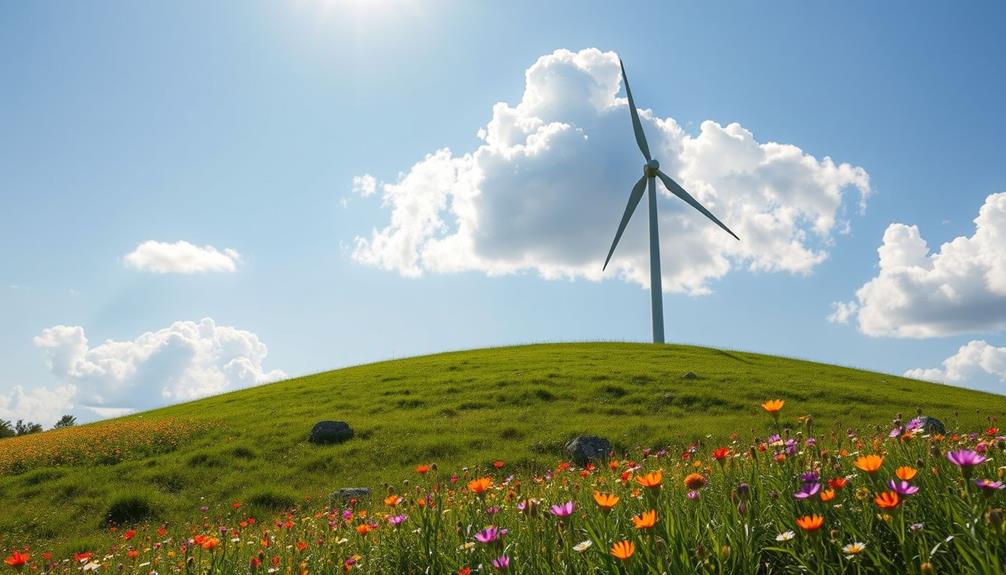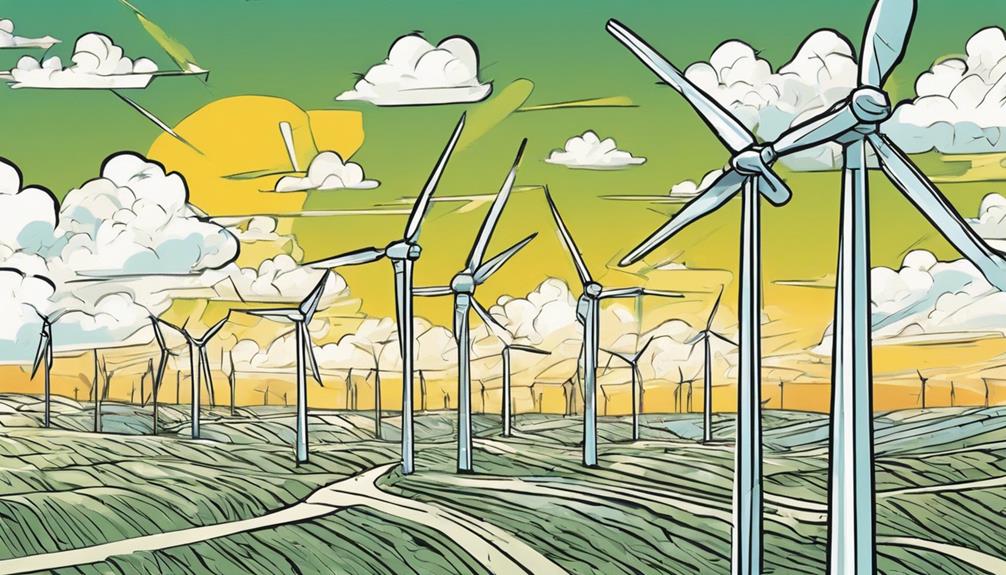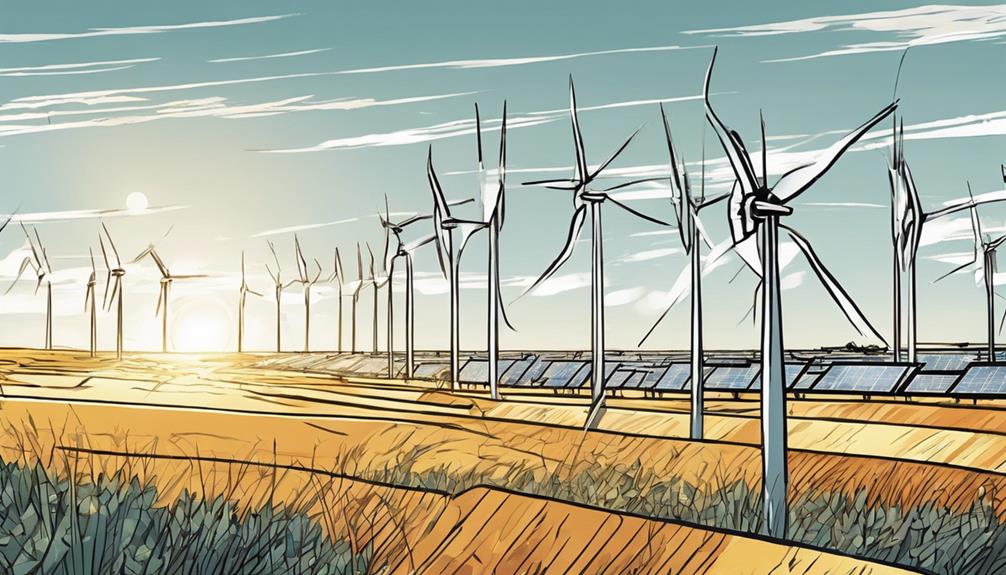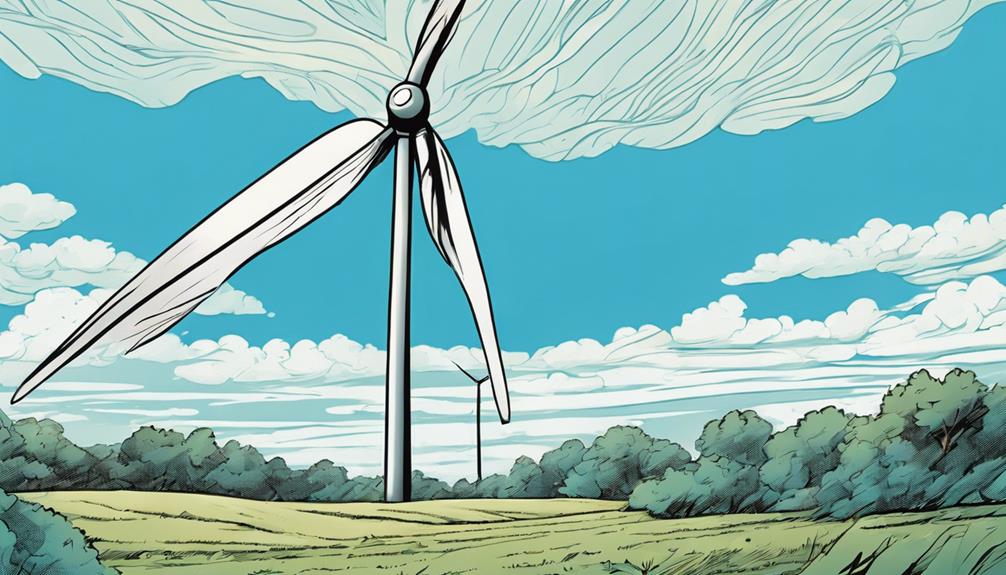Wind generators can greatly cut your energy bills and offer impressive long-term savings. By harnessing wind energy, you could enjoy rates up to 61% lower than your current electricity costs, with potential reductions reaching 70%. While initial installation can be pricey, government incentives like tax credits and grants can alleviate those costs. Plus, ongoing maintenance costs are manageable, averaging 1-2 cents per kilowatt-hour produced. Choosing the right location for your turbine is essential for maximizing efficiency. Uncover more insights to make the most of your investment and maximize your savings!
Key Takeaways
- Invest in wind generators to potentially reduce electricity bills by up to 70%, significantly lowering monthly expenses.
- Take advantage of government incentives like the Production Tax Credit and Federal Investment Tax Credit to offset initial installation costs.
- Choose optimal turbine placement with consistent wind speeds and appropriate height to maximize energy production and savings.
- Factor in long-term savings; operational costs are low, averaging 1-2 cents per kilowatt-hour produced.
- Regular maintenance and technology upgrades can prevent costly repairs and enhance the efficiency of wind energy systems.
Understanding Wind Energy Savings
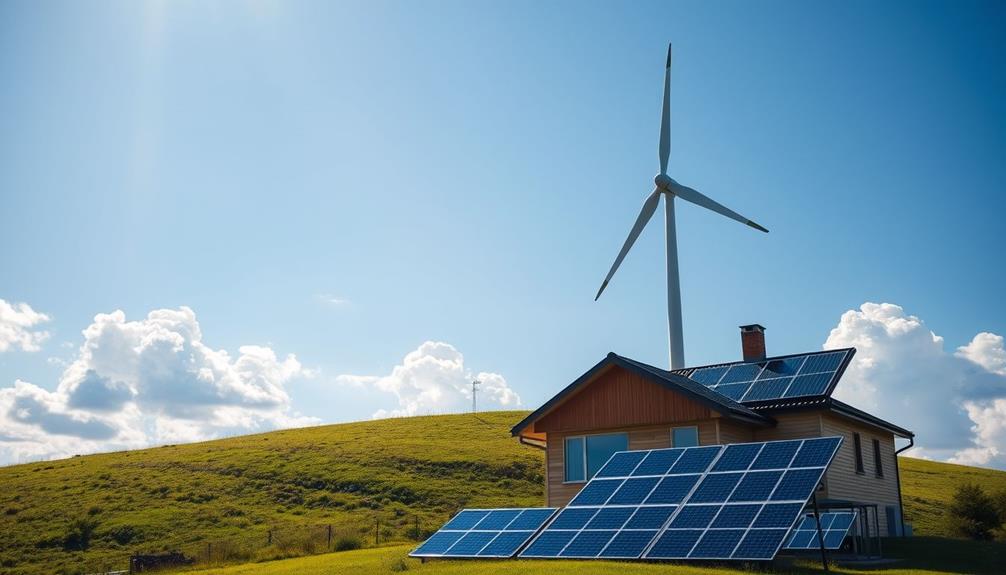
When you consider how to lower your electricity bills, wind energy stands out as an increasingly attractive option. By harnessing the power of the wind, you can markedly reduce your energy consumption and save on costs.
For example, customers of Berkshire Hathaway Energy in Iowa are enjoying rates that are 61% lower than competitors, projected to rise to an impressive 70%. This reduction in cents per kilowatt-hour makes wind-generated electricity a financially wise choice. Additionally, the capacity factors of wind turbines vary based on location and technology, allowing for optimized energy production in suitable areas, leading to even greater savings for consumers looking to maximize their investment in renewable energy.
electricity production from wind turbines demonstrates the potential of this energy source.
Wind turbines need only a fraction of the investment compared to traditional energy sources, and they produce electricity efficiently. A typical 1 MW turbine can power about 1,000 homes for a month, translating to substantial savings on your monthly energy costs.
As the average cost of wind energy continues to decline, it becomes even more viable for consumers like you looking to cut expenses.
Additionally, the Biden Administration's IRA is allocating billions for green energy incentives, enhancing the financial attractiveness of investing in renewable energy. By considering wind energy, you're not only making a smart financial decision but also contributing to a sustainable future.
Initial Costs of Wind Generators
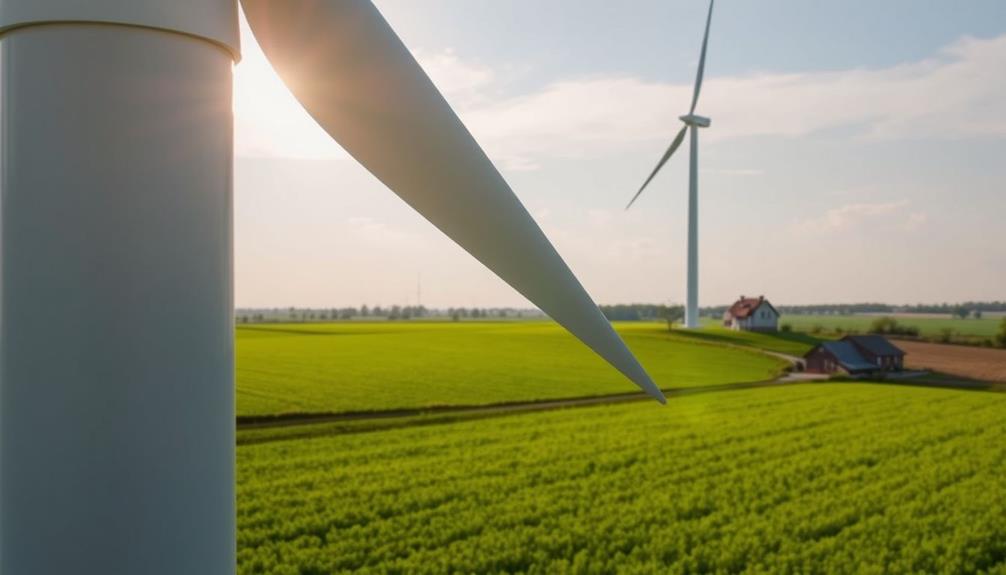
When you're considering wind generators, understanding the initial costs is essential. You'll face installation expenses that can vary widely, but there are also long-term financial benefits and government incentives that can lighten the load.
For instance, you may be able to offset some of these costs through available financial incentives designed to promote renewable energy.
Additionally, evaluating your overall budget and potential savings on energy bills can help you determine if this investment is right for you.
Let's break down what you need to know to make an informed decision.
Installation Expenses Overview
How much should you expect to spend on installing a wind generator? The installation expenses can vary greatly, depending on the type and capacity of the wind turbine.
For commercial wind turbines, initial costs typically range from $2.6 million to $4 million, averaging about $1.3 million per megawatt (MW) of capacity. If you're contemplating offshore wind farms, keep in mind that deep foundations are essential for stability, which can add to your expenses.
Additionally, understanding the impact of seasonal variations on wind patterns can help you optimize your energy production.
Here's a quick breakdown of what to think about:
- Turbine Costs: The average selling price for wind turbines is around €890,000/MW (approximately $965,000/MW).
- Foundation Expenses: Installing deep foundations can greatly impact your budget, especially for offshore sites.
- Declining Wind Energy Costs: Since 2019, the prices for wind-generated electricity have been declining, making these investments more attractive.
Ultimately, while your initial costs may seem high, these turbines typically pay for themselves through electricity sales to the grid over time.
Long-Term Financial Benefits
Long-term financial benefits from investing in wind generators often outweigh the initial costs, making them a smart choice for sustainable energy production.
While the average price for commercial wind turbines ranges from $2.6 million to $4 million, representing a considerable upfront investment, the declining costs of wind energy can make this a viable option for you. Mid-2023 data shows that the selling price for wind energy capacity was about $965,000 per megawatt (MW), highlighting the decreasing trend in costs.
Additionally, just like diversifying a retirement portfolio with options such as a Gold IRA, investing in renewable energy sources can protect against inflation and market downturns.
Although you'll need to commit to these initial costs, the consistent income generated from electricity sales to the grid can lead to substantial long-term financial benefits.
Moreover, the operational costs for wind turbines are low, averaging just 1-2 cents per kilowatt-hour produced. This means that, over time, your operational savings can greatly offset those initial costs.
Plus, with the recent financial support for green energy initiatives, investing in wind energy becomes even more attractive.
Government Incentives Available
Investing in wind generators can feel intimidating due to the high upfront costs, typically ranging from $2.6 million to $4 million per installation.
Fortunately, government incentives can greatly lower these initial costs, making wind energy a more attractive option for you. The Biden Administration's Inflation Reduction Act (IRA) has allocated billions for green energy projects, allowing you to tap into substantial financial support.
Additionally, just as with Gold IRAs, which provide benefits through tax advantages and long-term growth potential, wind energy investments can also yield financial resilience and stability in your portfolio.
Here are some key incentives to contemplate:
- Production Tax Credit (PTC): You could earn up to $25 per megawatt-hour of electricity produced from wind.
- State Grants and Rebates: Many states offer additional support for renewable energy projects, which can further offset your expenses.
- Declining Electricity Prices: The average selling price for wind-generated electricity has been decreasing, enhancing the financial viability of your investment.
Long-Term Financial Benefits
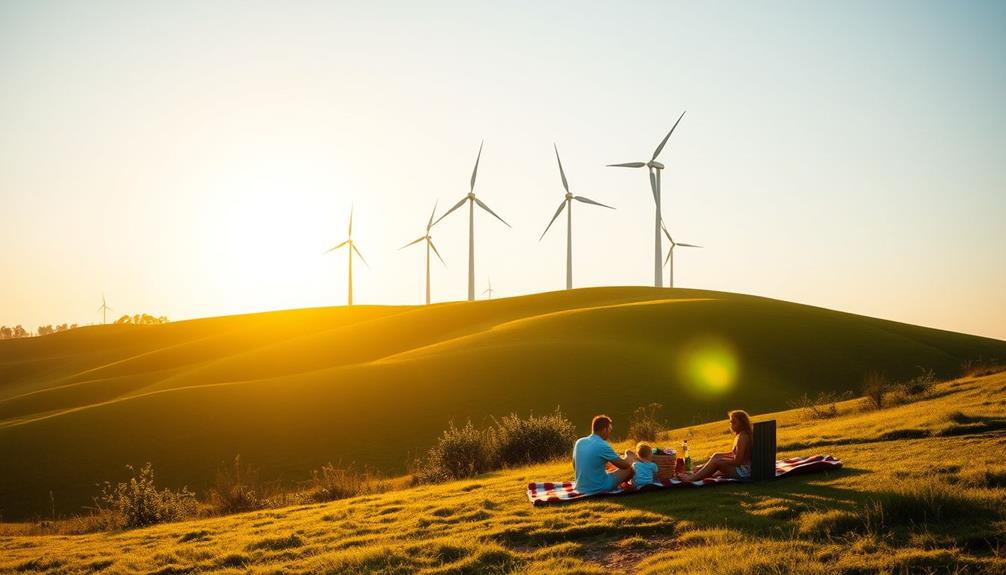
When you consider the financial landscape of energy options, wind energy stands out as a smart choice for long-term savings. Over the past decade, the cost of wind energy has dropped considerably, making it a financially viable option for those looking to reduce electricity bills. Incorporating yoga for back pain can also enhance your overall well-being, which complements the financial benefits of investing in renewable energy.
With average selling prices for wind-generated electricity declining since 2019, now's the perfect time to invest.
The average cost for commercial wind turbines ranges from $2.6 million to $4 million, translating to about $1.3 million per megawatt (MW) of capacity. This allows for substantial long-term investments that recover initial costs through electricity sales. For instance, companies like BHE have integrated wind energy, resulting in much lower electricity rates for residential customers in Iowa, where competitor rates are projected to be 61% to 70% higher.
Additionally, operational efficiencies in wind turbine maintenance average only 1-2 cents per kilowatt-hour produced, leading to considerable savings over time.
With the Biden Administration's Inflation Reduction Act boosting incentives for green energy projects, investing in wind energy not only enhances your financial landscape but also supports your quest for long-term savings.
Maintenance and Operational Costs
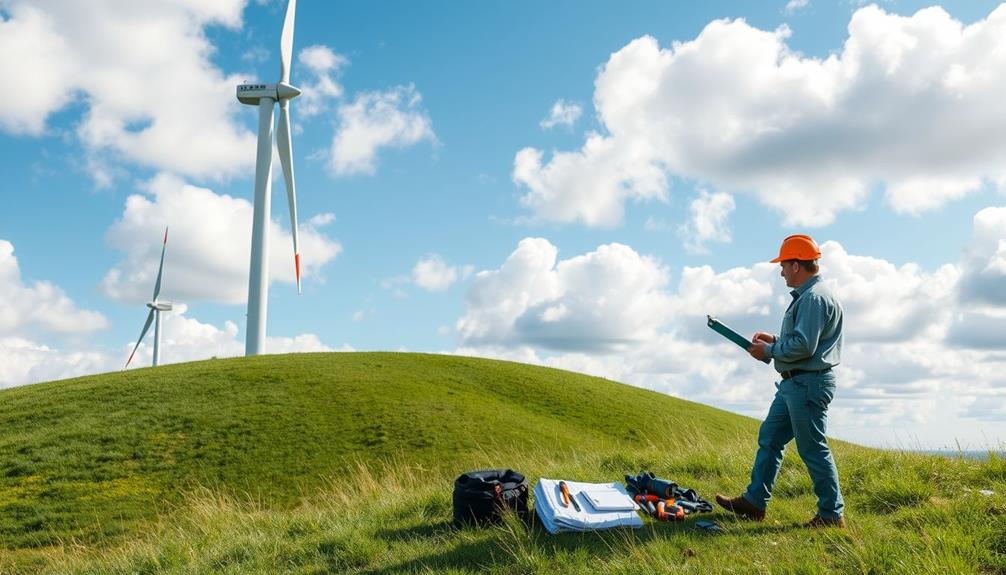
When you consider wind generators, ongoing maintenance expenses are a key factor in your overall costs.
Aging turbines can present challenges that drive up these expenses, making it essential to plan for potential wear and tear.
Additionally, just like with heat pumps, inadequate maintenance can lead to decreased efficiency and increased operational costs over time, underscoring the importance of regular inspections and servicing common causes of failure.
Understanding these operational costs will help you make informed decisions about your wind energy investments.
Ongoing Maintenance Expenses
Ongoing maintenance expenses for wind turbines play an essential role in the overall cost structure of wind energy projects. These costs typically average between 1-2 cents per kilowatt-hour produced, which can noticeably impact your operational expenses.
Annual operation and maintenance (O&M) costs range from $42,000 to $48,000, depending on the turbine's size and age. To guarantee efficiency and minimize expenses, consider how airless paint sprayers can reduce fatigue during maintenance tasks, making routine upkeep less strenuous.
To effectively manage these ongoing maintenance costs, consider the following:
- Regular Inspections: Schedule routine checks to catch wear and tear before they escalate.
- Lightning Protection: Implement measures to minimize the risk of damage and avoid increased maintenance costs.
- Invest in Technology: Explore advanced turbine design options that reduce maintenance challenges and enhance financial viability.
Aging Turbine Challenges
Aging wind turbines present significant challenges that directly impact maintenance and operational costs. As these turbines age, you're likely to face higher maintenance costs, averaging 1-2 cents per kilowatt-hour produced.
Annual operation and maintenance (O&M) expenses can range from $42,000 to $48,000, and these figures tend to increase as the turbines age. It's vital to develop a clear investment strategy with defined goals, especially when considering the long-term financial implications of maintaining aging turbines.
While technological advancements may help reduce some of these costs, older turbines typically demand more frequent repairs and part replacements. One major risk is lightning strikes, especially for offshore turbines, which can lead to costly operational downtime and increased maintenance expenses.
To mitigate this risk, implementing effective lightning protection systems, such as durable lightning diverters, becomes important. These systems not only help preserve the integrity of aging wind turbines but also minimize the financial burden of repairs.
Additionally, understanding the potential risks and rewards of renewable energy investments can provide valuable insights for energy savings and operational efficiency risk management strategies.
Optimal Placement for Efficiency

Where can you place wind turbines to achieve maximum efficiency? To maximize your energy generation, you need to take into account several factors. First, verify that your site has consistent wind speeds of at least 10-15 mph. This is vital for maximizing efficiency.
Additionally, understanding the building codes and zoning laws in your area can help guarantee that your installation meets local requirements.
- Aim for turbine heights between 200 and 260 feet to access higher wind speeds.
- Maintain a distance of 5 to 10 rotor diameters between turbines to prevent wake interference.
- Choose coastal or elevated locations for offshore turbines and open plains for onshore installations.
Advanced turbine designs are also important. They can enhance performance by capturing wind energy effectively in various conditions.
Utilizing advanced siting software can further aid in identifying the best locations by analyzing wind patterns and local terrain. This will help you make informed decisions, guaranteeing ideal placement of your wind turbines.
Incentives and Financial Assistance
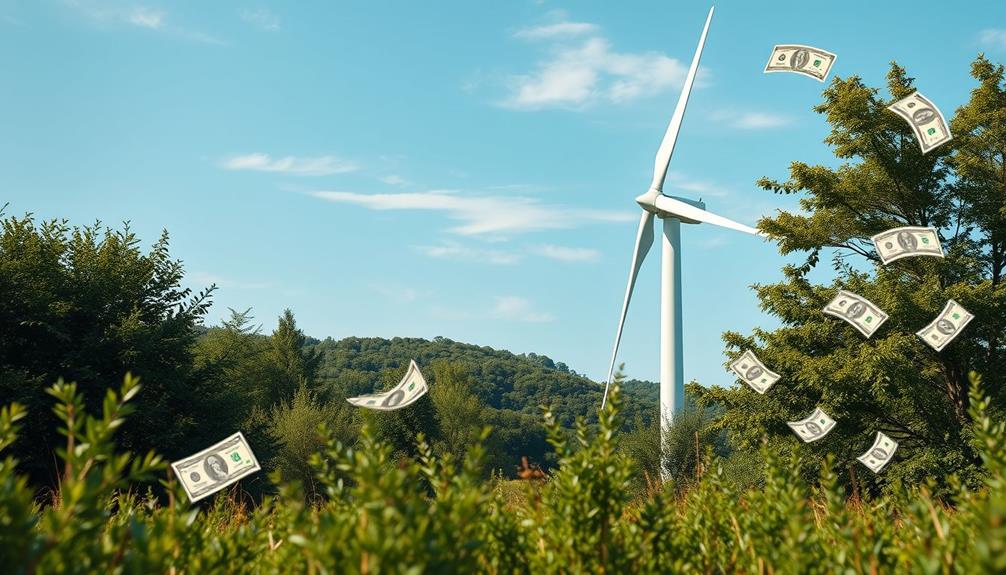
As you explore the world of wind energy, you'll quickly discover a range of incentives and financial assistance options designed to make your investment more affordable. The Biden Administration's Inflation Reduction Act (IRA) allocates billions toward green energy incentives, greatly enhancing financial support for wind energy projects.
Many states offer tax credits and rebates for homeowners who install residential wind turbines, helping to considerably reduce your upfront costs and improve your return on investment.
Additionally, the Federal Investment Tax Credit (ITC) allows you to deduct up to 30% of your wind energy system costs from your federal taxes, making the switch to wind energy more financially accessible. Numerous utility companies also provide incentives for adopting renewable energy sources, which could include rebates for energy-efficient practices or equipment.
Lastly, various financing programs and grants are available through governmental and non-profit organizations, aimed at supporting the installation of wind energy systems and promoting sustainable practices.
Frequently Asked Questions
How Can I Make My Wind Energy Cheaper?
To make your wind energy cheaper, invest in larger turbines, take advantage of federal incentives, guarantee regular maintenance, utilize high-capacity wind farms, and implement effective lightning protection systems to minimize costs and maximize efficiency.
How to Save Energy With Wind Turbines?
Imagine a windmill dancing in the breeze, harnessing nature's power. You can save energy with wind turbines by optimizing their placement, maintaining efficiency, and leveraging battery storage. Together, you'll create a sustainable, cost-effective energy future.
Do Wind Turbines Lower Electric Bills?
Yes, wind turbines can lower your electric bills. By generating renewable energy, they reduce reliance on more expensive sources, allowing utilities to pass savings onto you, resulting in lower rates and more stable pricing over time.
What Is the Biggest Downside of Generating Electricity Using Wind Turbines?
When the wind whispers promises of clean energy, it can also bring uncertainty. The biggest downside of wind turbines is their inconsistent energy production, which can disrupt grid stability and lead to higher maintenance costs over time.
Conclusion
Imagine watching your energy bills drop like autumn leaves, knowing you've harnessed the power of the wind. By investing in a wind generator, you're not just cutting costs; you're embracing a sustainable future. With the right placement and a bit of maintenance, you can transform your home into an energy-efficient oasis. Plus, with available incentives, the journey to savings is smoother than a gentle breeze. Don't just dream of lower bills—let the wind work for you! Installing a small wind system is a smart choice for both your wallet and the environment. Not only will you see a significant reduction in your energy bills, but you’ll also be reducing your carbon footprint and contributing to a cleaner, greener planet. With advancements in technology, wind generators are now more efficient and quieter than ever, making them a practical and attractive option for homeowners looking to make the switch to renewable energy.
